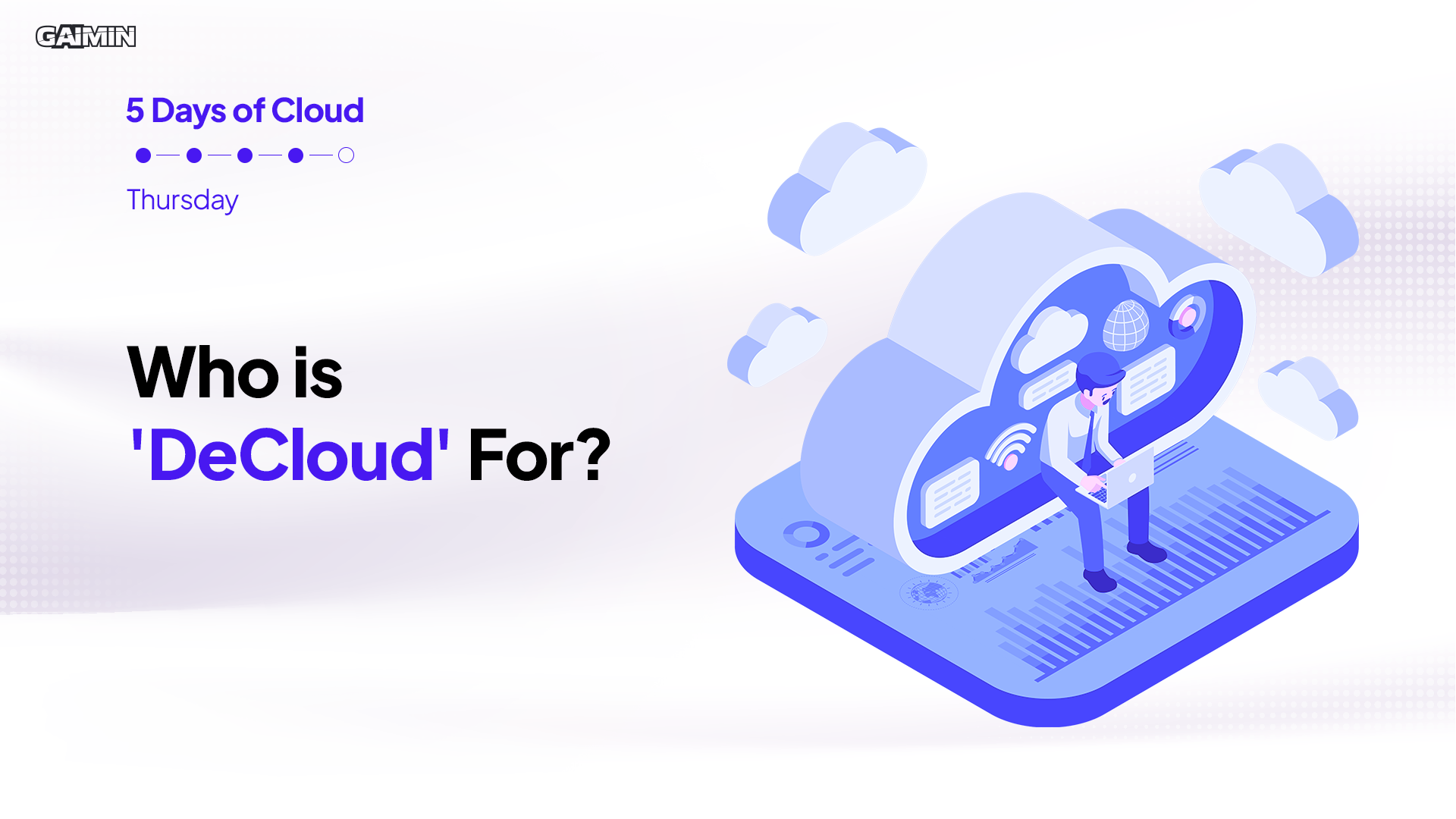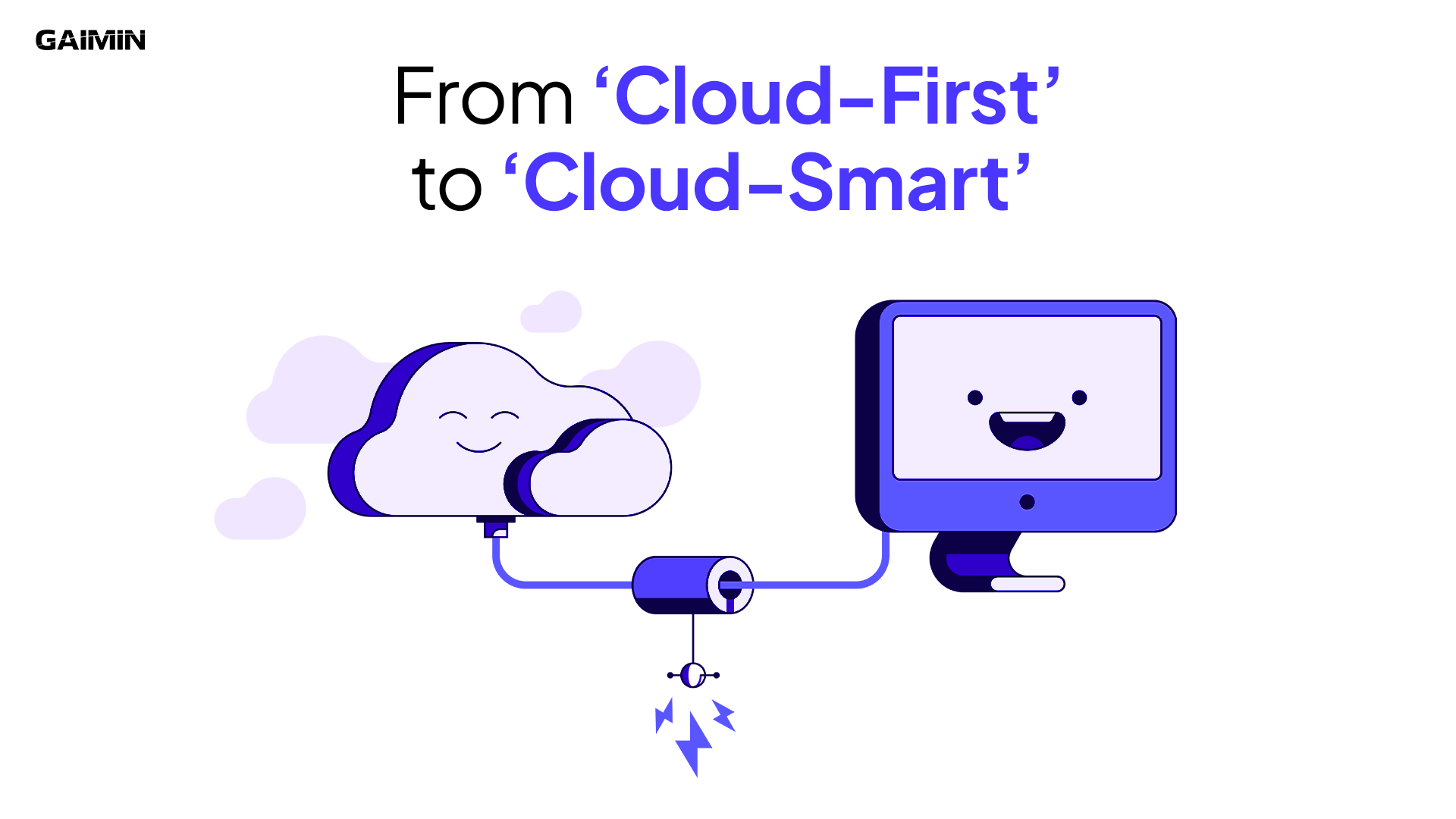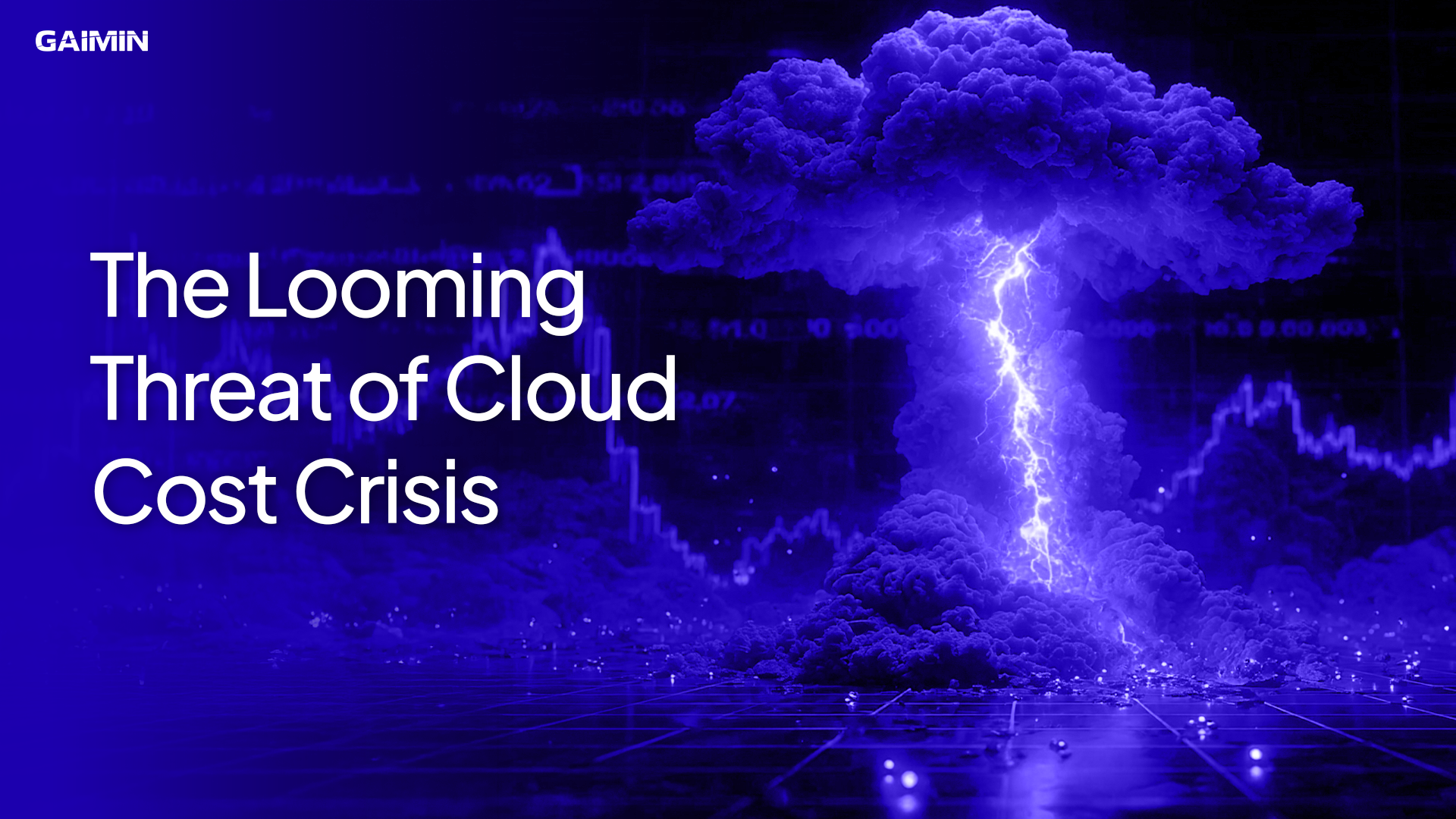Article 4 of “5 Days of Cloud with GAIMIN” on Real World Applications of Decentralized Cloud
In the last three parts of our “5 Days of Cloud” series, we’ve made a clear case: the centralized cloud, while revolutionary in its time, has reached a point of ‘diminishing returns’, and in the third article, we directly compared this era of cloud with the emerging decentralized option. High costs, single points of failure, increasing vendor lock-in, and global outages have shown their limitations. DeCloud, or decentralized cloud infrastructure, is not just a futuristic alternative but an urgently needed solution.
But beyond the architecture and ideology, there’s a practical question:
Who exactly needs DeCloud today?
The answer is far broader than most expect. While the concept of decentralization is often associated with Web3, DeCloud's real strength is in solving real-world problems, particularly those around file-sharing, compute scaling, distribution costs, and infrastructure resilience.
But in this article, we will primarily focus on the file-sharing use cases and explore where DeCloud is already relevant, some of the industries it serves best, and specific cases where traditional models fall short and DeCloud excels.
1. Game Developers and Publishing Studios
Use Case: File Distribution at Scale (Patches, Updates, Game Clients).
Problem: Distributing game builds and updates (often 20–100 GB) to millions of players globally causes:
- CDN bottlenecks and throttled downloads during launches
- High bandwidth and storage costs for developers (Akamai, AWS, Fastly)
- Poor player experiences due to server overloads.
Why DeCloud works for this industry:
- Peer-to-peer style file sharing allows gamers themselves to contribute bandwidth
- DeCloud reduces or eliminates dependency on CDNs
- Faster downloads due to swarm-based delivery (closer nodes = better speed)
Case in Point:
When Cyberpunk 2077 dropped its 50GB v1.5 patch in 2022, players, especially those in regions with low internet speeds, experienced 3–6 hour download times or more. CD Projekt Red likely spent hundreds of thousands on bandwidth costs for just that patch.
DeCloud offers an alternative for developers and studios: instead of scaling up with centralized resources, why not scale out via DeCloud, making distribution cheaper and more resilient?
2. Video and Content Streaming Platforms
Use Case: Edge Delivery for Video on Demand (VOD), Live Events, and Caching.
Problem:
- Content delivery costs increase exponentially with resolution (4K/8K).
- Live events spike server demand beyond provisioned capacity.
- Global audiences can suffer from regional latency.
Why DeCloud works in this case:
- Files cached and served by local nodes improve latency and throughput.
- Reducing reliance on central data centers.
- Support live stream delivery without major or cost-intensive infrastructure upgrades.
Case in Point:
Netflix reportedly spent over $1B in 2018 on content delivery technology; that figure would have increased exponentially by now. This gives a perspective on how much these cutting-edge file distribution services cost the providers, which then gets passed to the clients. DeCloud solutions could offset this via decentralized edge storage and delivery from user nodes, especially for back-catalog content and less time-sensitive VOD.
3. AI and ML Development Teams
Use Case: Distributed Compute for Model Training & Inference
Problem:
- GPU compute on AWS or GCP is prohibitively expensive.
- The world needs GPUs to power AI models.
- Centralized clouds can throttle or reprioritize AI workloads.
Why DeCloud Works:
- Taps into idle GPU power from gamers and individuals with high-end PCs.
- Drastically cheaper for training and fine-tuning LLMs or CV models.
- Decentralized GPU marketplaces (like GAIMIN Cloud or Akash Network) enable open access to compute.
4. Open-Source and Distributed Software Projects
Use Case: Self-Sovereign Distribution of Repositories & Releases.
Problem:
- Open-source Software communities depend on centralized GitHub, GitLab, and NPM servers.
- These platforms are vulnerable to censorship, takedowns, or outages.
- Popular projects strain download servers on release days.
Why DeCloud Works:
- Immutable storage of releases via decentralized file distribution.
- Peer nodes ensure redundancy without centralized failure points.
- Maintainers don’t pay for bandwidth or storage
Decentralized hosting of packages provides more resilience to breaches due to its peer distribution.
A New Cloud Solution for Existing Clients
The industries highlighted above, from video game studios and media publishers to AI labs and medical researchers, aren’t unfamiliar with the cloud. They’ve helped build the case for cloud adoption over the past decade.
But today, their needs have outgrown what centralized platforms can reliably and cost-effectively offer.
These clients share three things:
- Rising file delivery and computing costs.
- The need for performance that scales across various regions.
- A desire for control, not dependency.
DeCloud has answers to all those.
Take GAIMIN Cloud, for example. By tapping into distributed infrastructure, it cuts costs, boosts reach, and removes reliance on monopolized systems for these clients.
It’s a smarter, fairer evolution of the cloud.
Now is the right time to check our solutions out; our file-sharing solution would be a great start!



.png)
